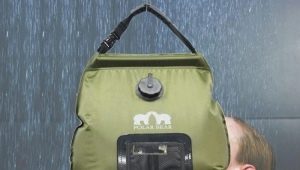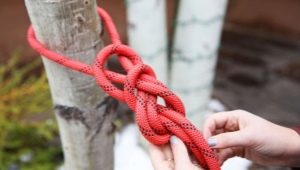Travel backpacks: purpose, sizes and tips for choosing
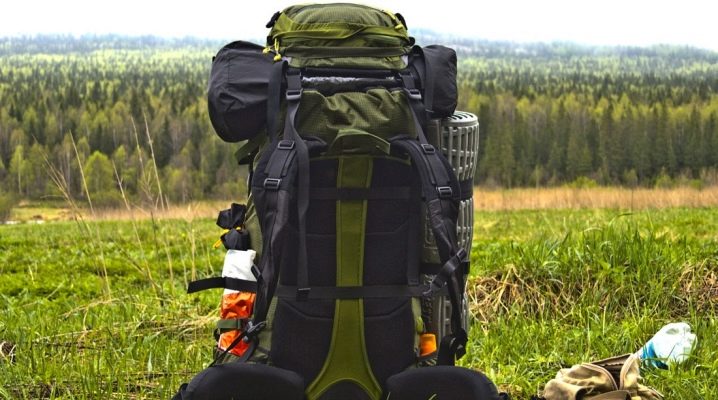
Tourism gives pleasure to a huge number of people. But on long journeys and even fairly close walks through the wilderness, you have to carry a backpack. Even beginners should know well what exactly it is and how to choose it.
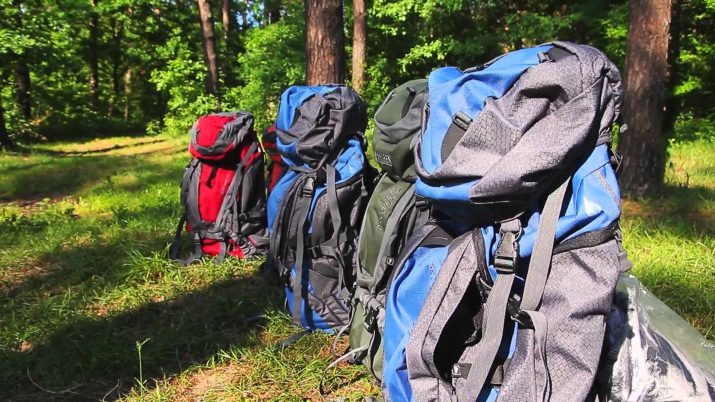
Device and purpose
A travel backpack can look the most intricate way. But at the same time, its main task - to facilitate and simplify the carrying of goods - remains unchanged. Therefore, a hiking shoulder bag consists, with rare exceptions, of the same type of structural elements. The strap system helps to put on the backpack.
The next important element is the so-called unloading belt. This detail helps to ease the load on the shoulders and spinal column. Pockets, as well as a flap, are needed mainly for storing small items that are needed on a hike during the day. But designers are increasingly abandoning pockets, because when they are filled, the center of gravity of the backpack shifts. It becomes heavier, and it will no longer be possible to ensure a uniform distribution of the load.
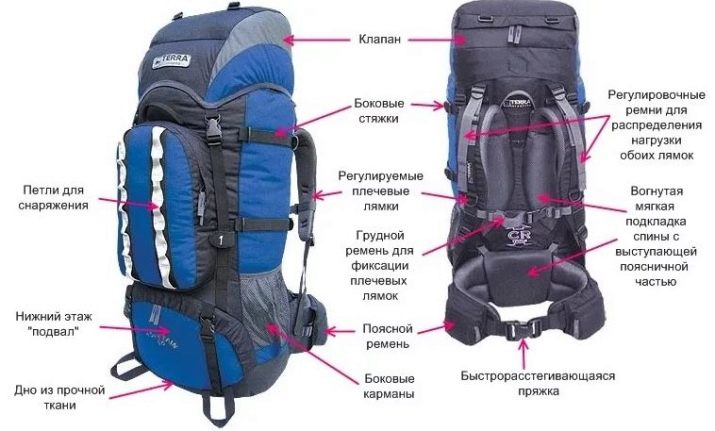
Often hang on a backpack:
- ropes;
- ice axes;
- single tents.


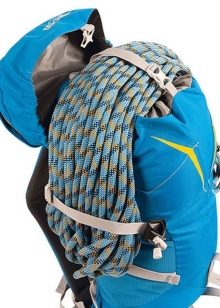
Therefore, developers usually provide for the presence of auxiliary ties and backup loops. The bottom entry is not present in all models. The need for it is rare. But almost all modern models are equipped with covers that stop moisture. Thanks to them, you can not be afraid of damp things from snow or rain.
Construction types
Soft backpacks are popular. They do not have any frame, so the total load capacity is limited to a maximum of 40 kilograms. In some cases, it is even half as much. But the products themselves weigh a little, which will please participants in short trips. Backpacks with a rigid frame system are much better adapted for long-distance transitions. In them, the load is distributed as evenly as possible. It is important that excellent preservation of things inside the bag is guaranteed.
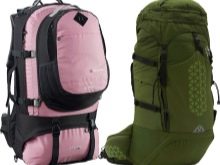
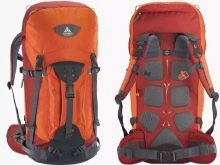
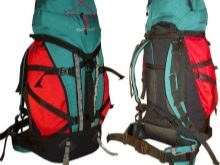
There are also easel backpacks. Their frame is made of steel. Such containers will help participants of multi-day hikes, who will have to carry 100-120 kg of equipment constantly.
All tourist models are functional:
- their developers provide for mounting a variety of ammunition outside;
- a backpack for a tourist is usually equipped with pockets both on the outside and inside;
- it most often has a frame, the volume of a tourist bag is usually 50-60 liters.
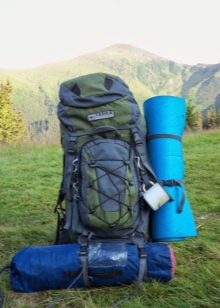
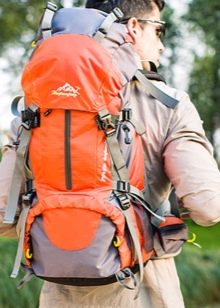
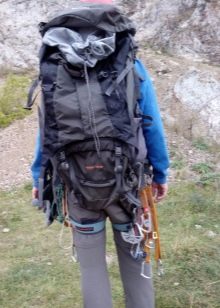
- Tracking subtype Designed for short trips (no more than 3 days) and holds a maximum of 50 liters, there are no external patch pockets and fasteners. Hunting and fishing backpacks can also be considered a subspecies of tourist backpacks. They differ only in the presence of mounts that allow you to carry fishing tackle or bandoliers.
- Sports models allow you to carry clothes, shoes and other equipment.We are talking about products for skiers, climbers and mountain tourists. In a separate group are goods for cycling trips (volume from 15 to 20 l).
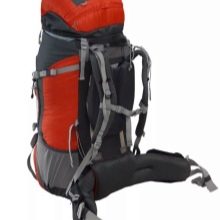
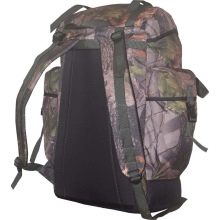
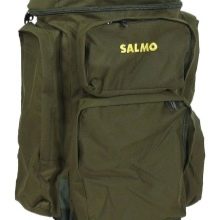
Materials and colors
In the vast majority of cases, travel backpacks are made of bright material. This helps to facilitate the search for missing travelers. As for fabrics, the most common are:
- cordura;
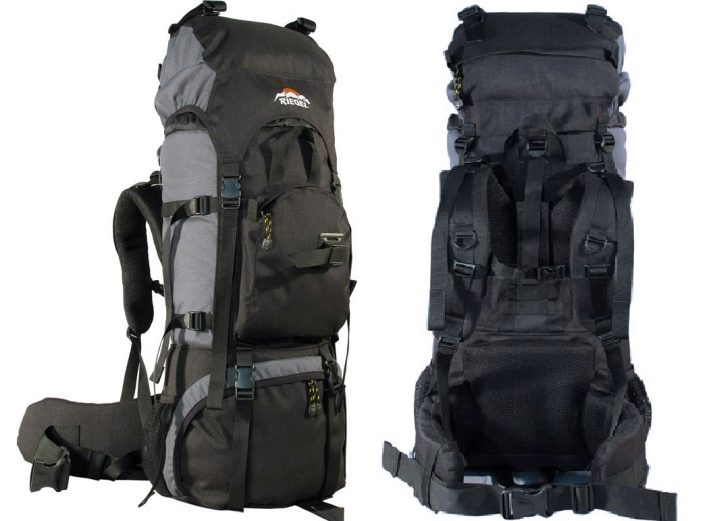
- advisor;

- Oxford;
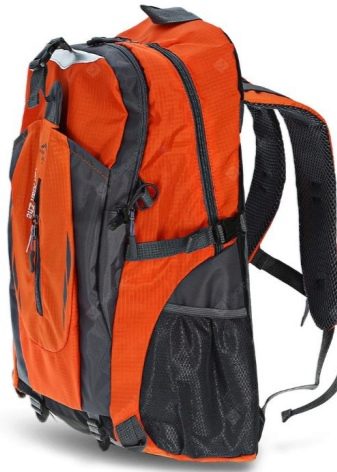
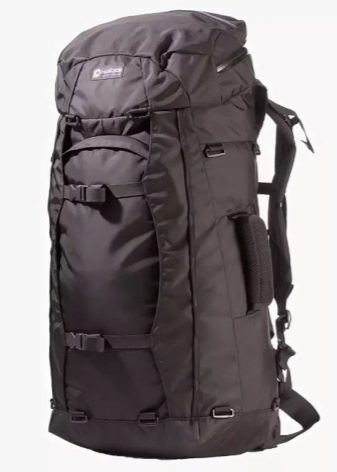
- nylon;
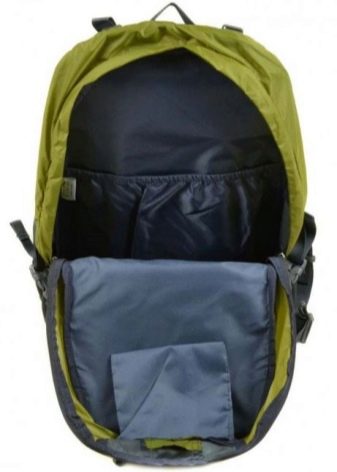
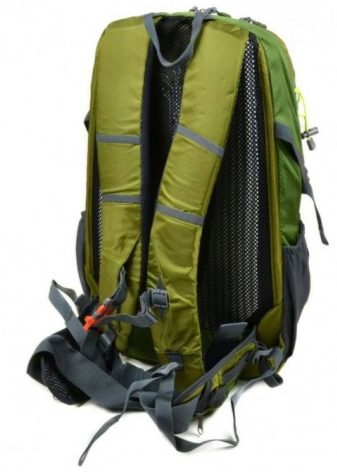
All other materials are either private variations (hybrids) of the main fabrics, or turn out to be trademarks promoted due to the lack of rights to the original names.
- Avisent - a material traditional for our country, originally used for the manufacture of parachute packs, covers for heavy equipment. The strongest variety is 5020. Avisent grades 5011 and 5032 are thinner and less durable. It must be taken into account that this material is water permeable.


- Cordura similar in origin to the previous material (created by the military). It is very expensive and quite heavy, and waterproofing is limited due to seams, pockets and other inlets.
Nylon is processed in a special way, because it is made up of threads with a special structure.
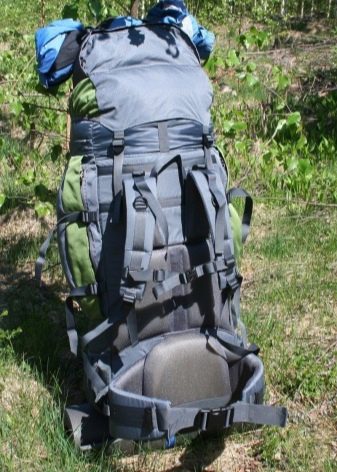
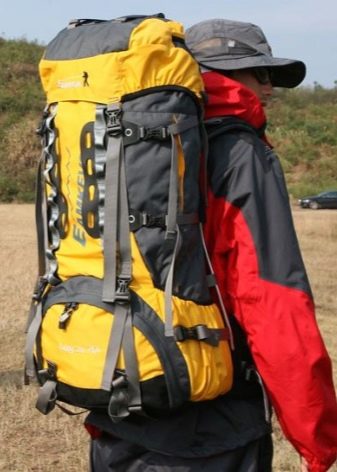
- Oxford - Polyurethane coated nylon fabric. The fibers are much thinner than cordura. The surface is shiny. Medium-sized backpacks are used from the 420th Oxford series. Series 840 is closer to Cordura, but more shiny.
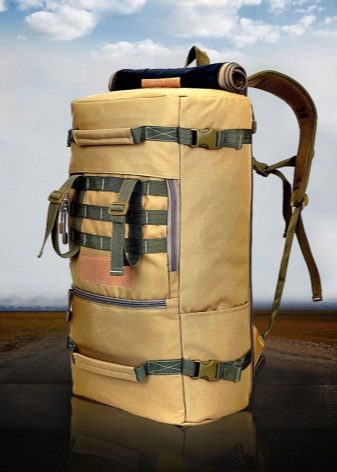

accessories
When choosing accessories, you should consider about metal and plastic options. Buckles made of polyamide become fragile in frost from 15 degrees. Even worse is ultraviolet radiation. Therefore, hiking backpacks should be equipped exclusively with steel fittings.Inserts in the belt, strap and back should ideally consist of 3 layers of material of different stiffness with a total thickness of 0.01-0.012 m.
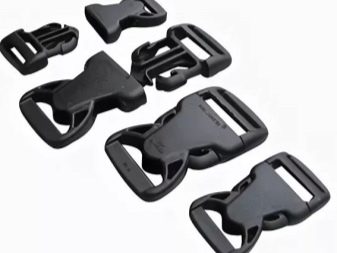
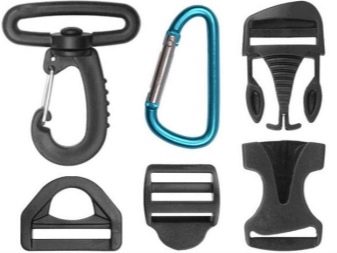
When choosing a color for tourism, it is required to be guided strictly by the motives of survival. So, unlike hunting equipment, any camouflage colors are unacceptable. Red, orange, green (in steppe and mountain tourism) products are quite appropriate. Bags for women and girls should have an even more catchy look.
Volumes
No matter how important the technical nuances, colors and fabric of the backpack, capacity must also be taken into account. It is equally foolish to buy a small 40 liter for a 2-3 week mountain trip or huge 120 liter or more bags for teenagers going on a weekend hike. But in addition to these general nuances, it is necessary to take into account individual subtleties. When a hike is organized by a reputable research institution or a travel professional, the leader decides what equipment to use.
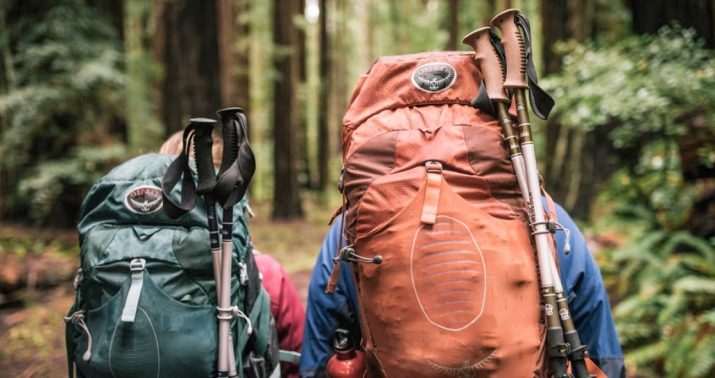
But for solo travelers and beginners you need to independently think through all the requirements for the same backpacks. The less experience tourists have, the more relevant a large backpack is. It is very difficult at first to take into account all the needs accurately and you will have to lay a fair supply of things. When collecting, you need to consider the following nuances:
- type of trip and its duration;
- route features (catering and halts, overcoming mountains and hard-to-reach areas);
- personal characteristics of travelers;
- the choice of equipment according to the classical scheme or the transition light.
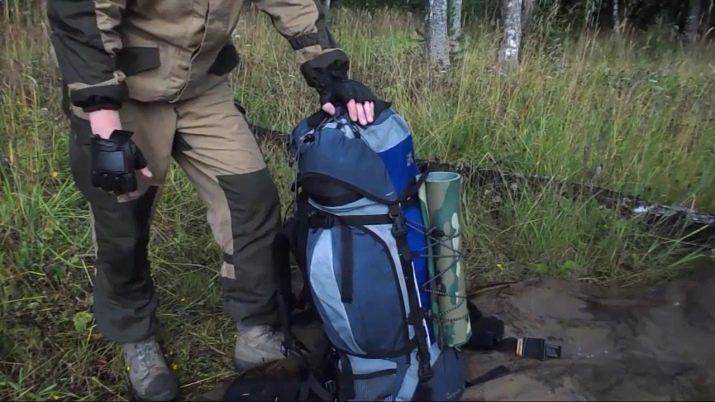
Tourist experience, of course, affects very much. A backpack with a capacity of 80 liters is needed for a beginner hiker where a trained professional will cost 50 liters.Those same 50 liters are considered sufficient for a transition on a summer weekend through a suburban forest or low mountains, across the steppe. If children under 15 go on such a trip, they should take a small backpack of 30 liters. For tracking, it is advised to use shoulder bags with a capacity of 60, 70 liters.

When planning to participate in a category hike in the mountains, on an expedition or on a trip of more than 400 km, it is advisable to choose a backpack from 80 or even 90 liters. This is due to the need to carry a large amount of travel equipment and insurance. The largest bags (at least 100 liters) are taken by water tourists and skiers. In winter, more things are needed than in summer. A backpack for 110-120 liters is required for multi-day trips in the Pamirs, the North Caucasus, the Sayans, Kamchatka or Yakutia.

Even in the same area, tourists can stay in tents or in capital houses, huts. This immediately gives a difference of 5-10 liters of volume. And even in the houses there is a significant difference - depending on whether the dwelling is heated or not. The following nuances are also taken into account:
- wind intensity;
- the relative humidity of the air in a particular place;
- cooking on a fire or on a gas burner;
- the need in some cases to wear more changes of clothes, more high-calorie foods.
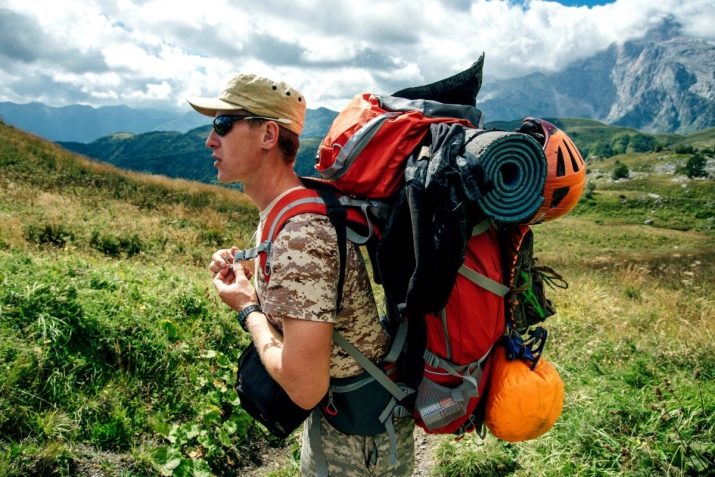
How to choose?
Modern men's backpacks have a strict and even harsh design. Usually they contain a lot of things and take up a lot of space. Women's designs differ in the following parameters:
- ease;
- relatively small capacity;
- soft execution of shoulder straps;
- short narrowed back;
- the presence of applications, embroideries, bright prints.
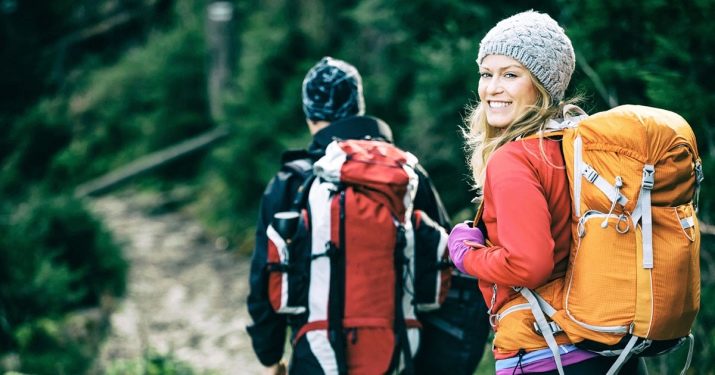
When choosing a backpack, you need to pay attention to the threads used. The best choice for sewing a backpack is lavsan or polyester thread. It is recommended to choose designs with twisted roll-type zippers. According to the generally accepted classification, their number must be chosen taking into account the load on a particular fastener. Buckles, other accessories (including decorative ones) should be taken from advanced, well-known companies.
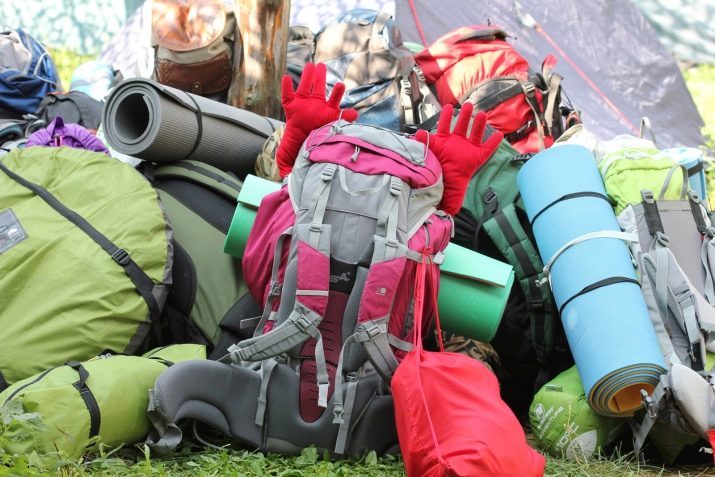
An important nuance that is often overlooked: the length of the backpack should be identical to the length of the spinal column. This circumstance is equally important for both an adult and a child. Violation of this rule threatens not only inconvenience, it can harm health. When making a measurement, you do not need to pull the tape, it should hang freely.
The waist belt in a good product takes all the load with a simple adjustment. The straps of a tourist backpack should not be too thin and at the same time elastic. The distance between them is selected so that the shoulder bags do not slip. A quick-release valve is much more valuable than a tightly sewn one. As for additional pockets, attaching them to the side is a dubious merit.. For traveling to the mountains, this solution is normal, but not so good for going to the forest (where pockets on the left and right will interfere with making your way through dense thickets).
It is very important to evaluate the length of the side tie straps. They should fit rugs or medium-sized tents without any problems. The number of compartments and their proportions should be estimated. Regardless of whether travelers go to the mountains, to the forest or to the steppe, they should choose shoulder bags with rain covers.
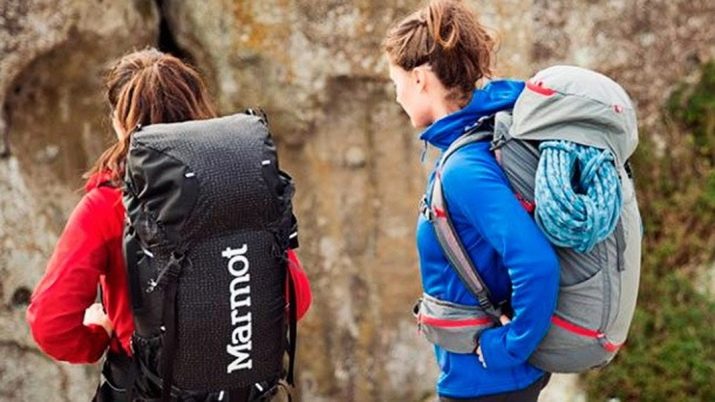
When choosing backpacks, it should be borne in mind that modern designs can only be fairly light, specimens weighing over 2.5 kg can be safely put aside.It is also necessary to check that the fabric is strong and the seams are strong. Many professionals point out that the best bottom of the bag is cordura. For tourism, it makes no sense for beginners to purchase especially expensive backpacks. Budget products of domestic factories or Asian countries will at least allow you to decide on further wishes and make a more informed choice.
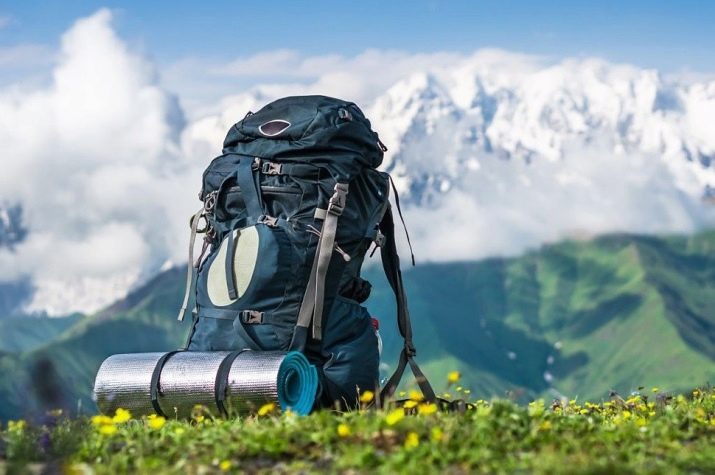
But even for experienced travelers, it is not advisable to chase after fashion. Many "bells and whistles" do not bring real benefits. It is better to beware of buying the latest models. A backpack is not a laptop, really valuable innovations rarely appear here.
For hunting and fishing, only bags made of the most durable waterproof fabric are chosen. At the same time, it is necessary to leave more free space for mining. Hunters and anglers need to have all the necessary things in the most accessible place, and therefore you should choose models with as many external pockets as possible. It must also be remembered that the exemplary backpack for the trapper and fisherman is painted in camouflage colors, otherwise it will scare away animals. It is worth looking at the models on wheels, which are convenient when used in the city, at the station, at the airport and in the port.
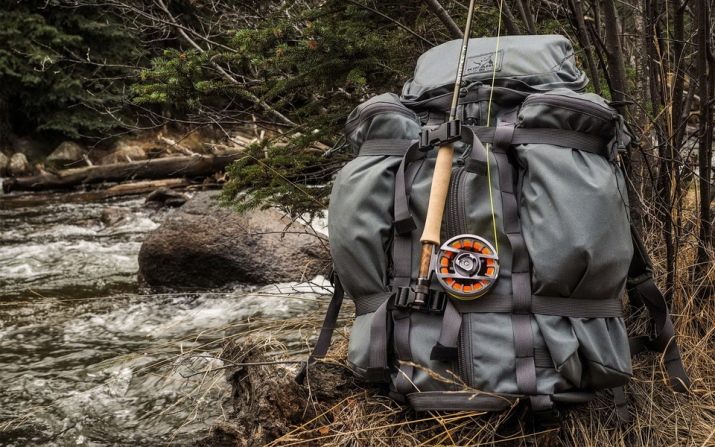
It is categorically impossible to choose backpacks without adjusting straps. It is necessary to check even the most beautiful models in terms of height, and in a loaded state. Trying on an empty bag is just as unreliable as judging it by its appearance. The self-resetting buckle is better than the fastex buckle because of its high strength.
Professional copies equip elaborate ventilation systems. It is strictly impossible to trust the products of unknown companies. The choice between trusted manufacturers is quite sufficient to be able to find a good version. And, of course, You need to read all the reviews before buying.

Rating of the best models
- The top of the best options definitely includes a backpack Zion from Splav. It is recommended for mountaineering (both in professional and amateur format). The bag was equipped with a rigid frame with duralumin reinforcement. However, this did not prevent the designers from implementing another interesting move - using soft pads. These elements evenly distribute the weight. The volume of the Zion is 35 liters, and the lack of capacity is to some extent compensated by the ability to hang equipment on external mounts.
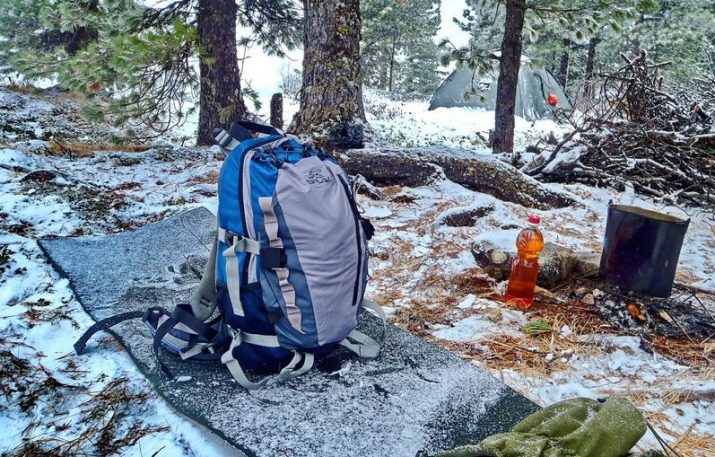
- Deuter Futura smaller in volume than the previous model (only 28 l). However, for short suburban trips, this product is quite good. The developers took care of equipping their product with a maximum of pockets. The safety of travelers is ensured by light reflectors on the fasteners. A rain cover is also provided.


- Husky Sammont 70 + 10 is, as it were, at the opposite pole. Its volume is 80 liters. The interior space is well thought out. It is possible to mount ice axes. The backpack weighs 2.58 kg, which is quite appropriate for adult travelers.
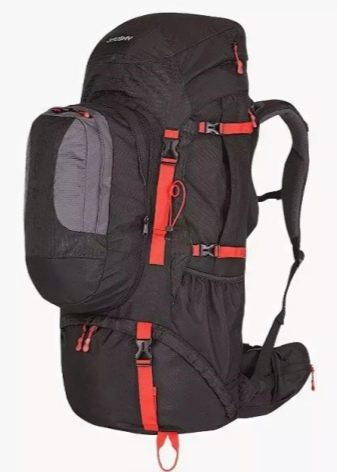
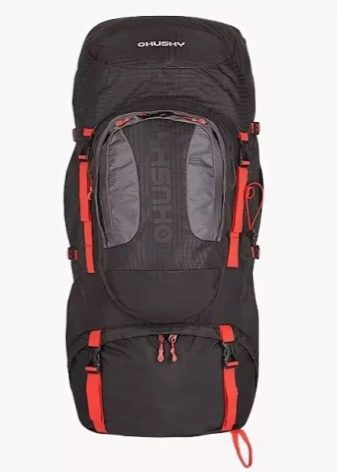
- The maximum capacity is typical for Tatonka Bison 120. The backpack opens both from the side and from the bottom. The outer pocket is hermetically sealed with a zipper. The developers have provided a removable mounting unit for the ice ax. The mechanical load on the spine is distributed as correctly as possible. The normal ergonomics of the Bison 120 is realized only when worn by people whose height is not less than 1.8 m. Cordura fabric is used in the tailoring of the product. The service life of a good product is almost unlimited.
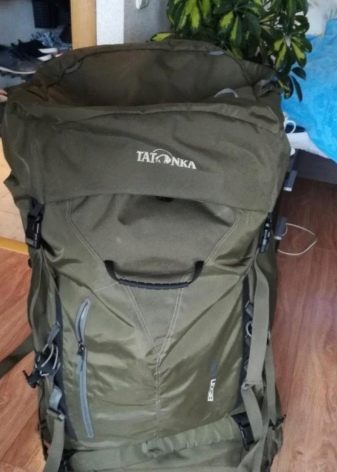
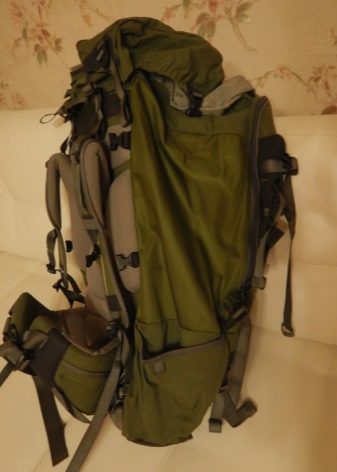
- Hiking tourists can also choose Deuter Aircontact 75+10. This shoulder bag is equipped with a pocket for small items inside. The Deuter developers have prepared a special place for maps, as well as a compartment for wet clothes, rings for hiking equipment and ice axes. The frame is well reinforced. The set includes a rain cover. The disadvantage of the design is the high cost.
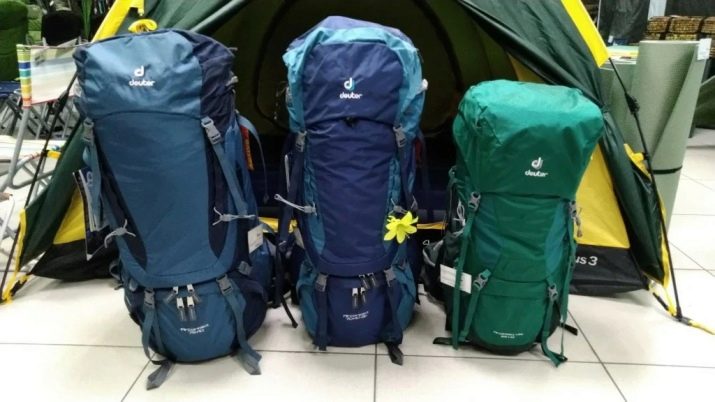
Tramp Light 60 recommended for tourists and participants of professional expeditions. The features of this model are:
- separate access to the upper and lower compartments;
- the ability to remove the top valve;
- careful anatomical adjustment;
- unsuitable for use at full load;
- lack of power frames.
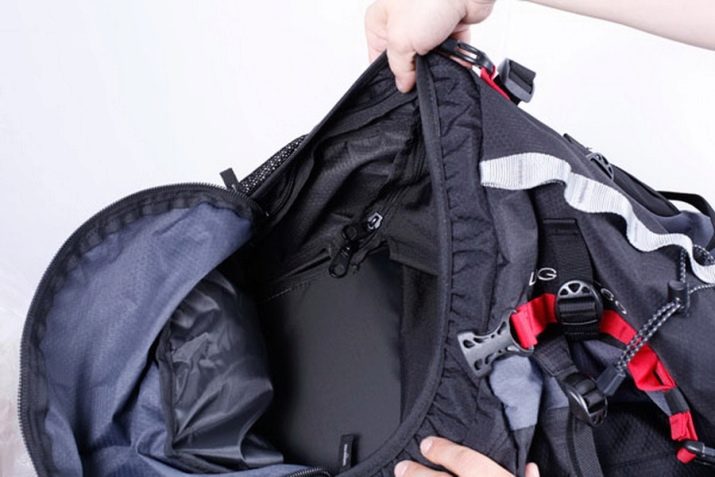
The Polar 1955 27 l soft frame backpack has a good reputation. According to the manufacturer, this model will be suitable for approaching almost any distance, if supplies are distributed correctly. Foam inserts make it easy to wear. There are enough departments. But it should be noted that there are no additional fasteners, and in many cases this is inconvenient.
How to wear?
Whichever backpack is chosen, wearing it incorrectly can create many problems. Before starting work, it is customized to your needs. The setup goes like this:
- loosen all belts;
- load the bag;
- put it on;
- bend slightly forward;
- adjust the tightening of the straps, achieving the placement of the lumbar belt strictly above the small pelvis.
- then tighten the belt.
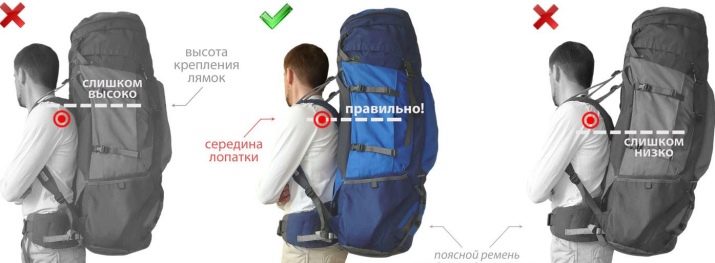
Having achieved the correct position, you need to slowly and carefully tighten the shoulder straps. Adjustment is made with the utmost care, because the slightest mistake can ruin the whole thing. By increasing the tightening angle, you can unload the shoulders as much as possible. Next, they are engaged in a belt on the chest.It is fixed so that the tightening is as tight as possible.
The belts on the belt are first relaxed and then tightened so that the backpack definitely stops hanging out. Next, put on the bag and look for the ideal position above the hip joint. The angle formed by the shoulder in relation to the adjustment straps is a minimum of 30 and a maximum of 60 degrees.
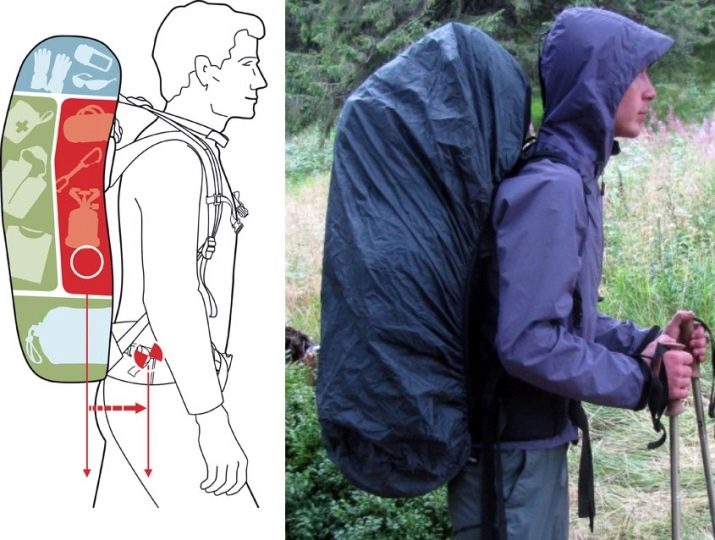
Already on the road, you should adjust the position of the belts, focusing on the load of the backpack, fatigue and traffic schedule. If the shoulder bag is equipped with a steel rod, it is positioned so that the curves correspond to the anatomy of the back. The slightest discrepancy with her is unacceptable.
Should be placed in a backpack only the essentialsso make a list of important things ahead of time. Laying, regardless of the design, is carried out according to one rule: the heavier the thing, the lower and closer to the back it should be placed. It is unacceptable to carry a backpack, even partially filled, on one strap. All sharp and cutting items are carefully packed. To avoid problems it is required to dry the backpack, if it is seriously damp - it is dangerous to postpone it. Before laying, a polyethylene or cellophane bag is placed inside.
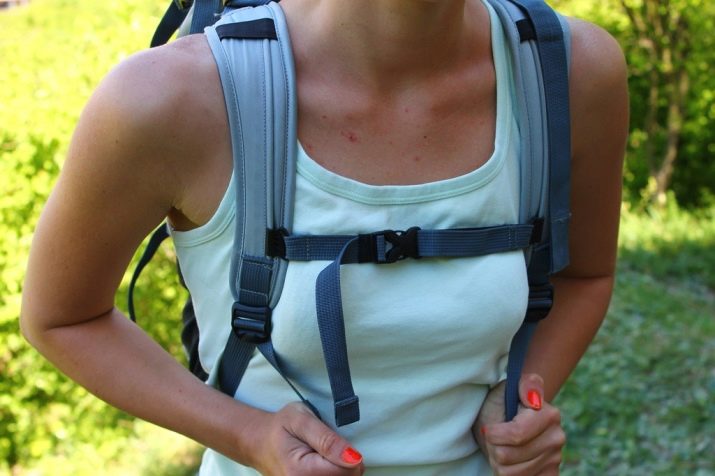
This is an additional insurance against dampness of things. Of course, if there is protection from the rain, you need to use it more actively. Another caveat: things should be packed as tightly as possible. At the same time, experienced tourists are always advised to divide large batches of products into smaller parts. The smaller the packaging, the more compact the stacking and the easier the extraction.
Put on top what exactly will be needed on the next section of the path. Below are those things that are sometimes needed during the trip. Items used only in parking lots are placed at the very bottom or further away. It is unacceptable that angular, hard and uncomfortable objects rest against the back. You can move the backpack only by the handle or by the straps.
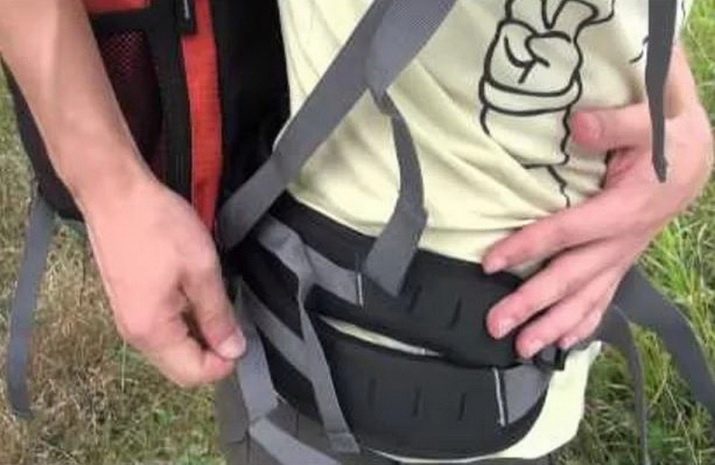
It is strictly forbidden:
- throw the backpack on your back and take it off with a jerk (regardless of the degree of loading);
- throw on the ground;
- use a bag instead of a seat or pillow.
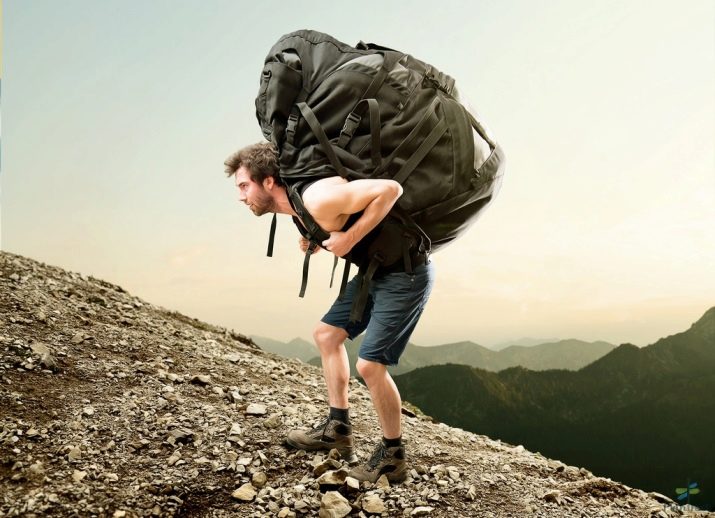
For information on how to properly pack and wear a backpack, see the following video.























